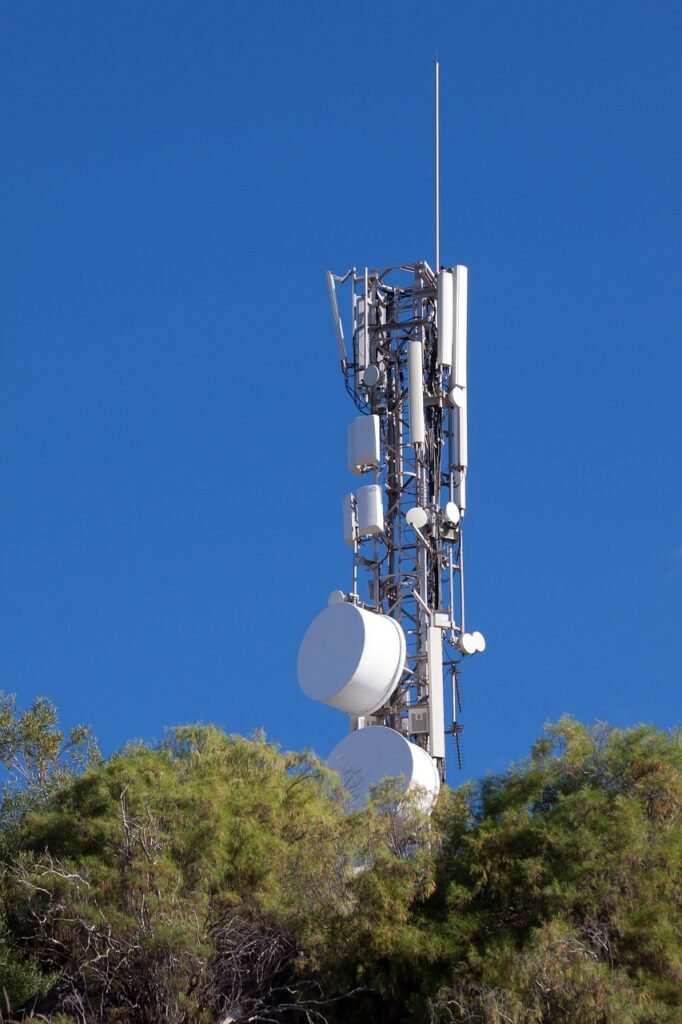What will change with 6G
Introduction: The Evolution Continues
Wireless communication has undergone rapid transformation over the past few decades—from 1G analog voice to the current 5G era with ultra-low latency and high bandwidth. But as innovation accelerates and demands increase, the industry is already eyeing the next frontier: 6G.
Expected to roll out commercially around 2030, 6G promises unprecedented capabilities in speed, reliability, and intelligence. It will not only build upon the foundations of 5G but also introduce new paradigms in connectivity so lets see What will change with 6G ?
6G vs. 5G: What Will Change?
The primary difference lies in scale and intelligence. 6G will operate in the terahertz (THz) frequency spectrum (0.1–10 THz), offering theoretical data rates of up to 1 Tbps—about 100 times faster than 5G.
Where 5G brought low latency (around 1 ms), 6G aims to push that into microseconds. It will also deeply integrate artificial intelligence and machine learning (AI/ML) into network management and orchestration—creating an AI-native architecture.
Key Enabling Technologies for 6G
Terahertz Communication
Operating at THz frequencies enables ultrafast data transmission but comes with technical challenges like higher attenuation. To overcome this, advanced beamforming, meta-surfaces, and dense small-cell networks are under development.
Intelligent Surfaces and Holographic Beamforming
These will allow 6G networks to control how radio waves propagate through the environment, enabling customized signal routing for better coverage and reliability.
Integrated Sensing and Communication (ISAC)
6G will integrate communication with environmental sensing, enabling applications like object detection, gesture recognition, and even health monitoring via wireless signals.
Use Cases of 6G: Beyond Human Communication
Extended Reality (XR) and Holographic Telepresence
6G will support fully immersive XR experiences with 3D holographic visuals and haptic feedback. This will redefine entertainment, education, and remote collaboration.
Digital Twins and Smart Cities
With massive device connectivity and real-time processing, 6G will power digital twins—virtual replicas of real-world systems. This will enhance predictive maintenance in industries and improve city management.
Autonomous Mobility and Space-Air-Ground Integration
From autonomous cars to drone corridors and LEO satellite communication, 6G will provide a seamless multi-layered infrastructure for intelligent transportation.
Research and Development Landscape
Leading Institutions and Collaborations
Major telecom giants and research institutions like Nokia Bell Labs, Samsung, Huawei, Ericsson, and NTT DoCoMo have already initiated 6G R&D. Collaborative efforts such as Hexa-X (EU) and Next G Alliance (USA) are leading the charge.
Government Investments
Countries including South Korea, China, the US, and the EU are making substantial investments into 6G development. For example, China launched its first 6G test satellite in 2020, while the U.S. is channeling funds into spectrum exploration.
Challenges and Considerations
Infrastructure Overhaul
Terahertz communication requires an entirely new infrastructure. That includes ultra-dense small cell deployments, quantum-safe cryptography, and advanced cooling for high-frequency equipment.
Energy Consumption and Sustainability
Despite offering efficiency gains per bit, 6G’s expected scale could significantly increase overall energy consumption. Developing green 6G networks is therefore a high priority.
See how green networking is evolving.
Ethical and Regulatory Framework
6G will raise ethical questions around privacy, security, and algorithmic bias—especially due to its AI-native nature. Regulators must work in advance to define data protection laws, AI governance, and spectrum allocation guidelines.
Industry Readiness and Timeline
While commercial launch is expected by 2030, early trials could begin by 2028. Roadmaps from companies like Samsung and Nokia outline a phased approach—starting with proof-of-concept, moving to field trials, and finally to scaling deployments.
Conclusion: A Network of Networks
6G isn’t just a faster version of 5G—it’s a convergence platform for intelligent communication, computation, and sensing. It will enable applications yet unimagined, fundamentally reshaping industries and everyday life.
Those who start preparing now—through infrastructure, talent, and strategy—will be best positioned for the opportunities that 6G will create.
hope this article fulfills readers expectation on topic What will change with 6G? Let us know your take on comments section
Further Reading – Recommended Books
- “Fundamentals of 6G Communications and Networking” – by Zhenyu Xiao & Yiqun Wu
- “6G: The Next Horizon” – by Hemanth Kumar and Dr. Ashok Kumar
- “Advanced Wireless Networks: Cognitive, Cooperative & Energy Efficient Smart Communication” – by Savo G. Glisic
- “Terahertz Wireless Communication Components and System Technologies” – by Jianjun Liu
for the next article in series


